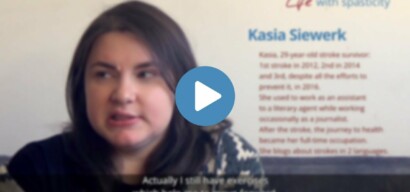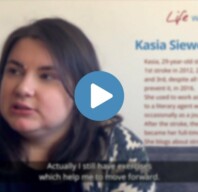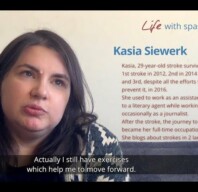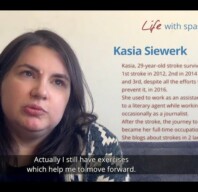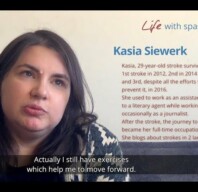Aids are available for many areas of daily living in order to make it easier for patients to cope with the challenges of everyday life. Using these aids can help patients to regain more independence and make it easier for them to participate in family and social life. Many of these aids are designed to be used with one hand, making it possible to do activities that can otherwise only be done with two hands.
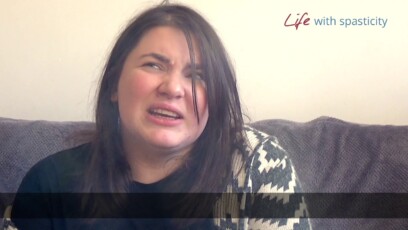
How everyday life changes with post-stroke spasticity
With spasticity many aspects of everyday life can be difficult and arduous and sometimes even become extremely challenging. The following areas may be affected:
- Eating and cooking
- Dressing
- Housekeeping
- Mobility (walking to the supermarket or to work)
- Sleep quality
- Personal hygiene
- Posture
Depending on the location and extent of the spasticity these effects can range from mild impairment of activities of daily living to severe limitations in patients’ private and professional lives.
Patients may need help with activities that they could previously do naturally and completely independently. These might be very personal or intimate activities, such as daily hygiene, preparing a meal or getting dressed. Patients may also find it difficult to pursue their careers as usual or indeed at all.
There are better and worse days. But nevertheless I welcome every single day, because each one of them might bring something good and unexpected.
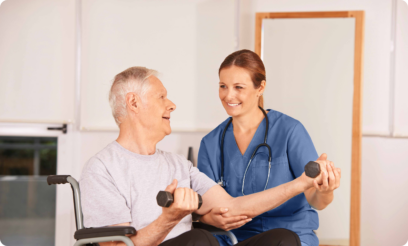
Support is key: Post-stroke spasticity patients must not be left to cope alone.
Specialist doctors, physiotherapists and occupational therapists as well as self-help organizations are always on hand to give help and advice. Although not curable, with the research and development of modern treatment methods and their application spasticity is now easily treatable. Often treatment can ease patients’ symptoms to such an extent that they can resume their everyday activities and largely regain their quality of life.
The aim of this page is to help patients, family members, carers and interested parties to get in touch with specialists, other patients and helpers, who will encourage them and help them pick up their normal daily lives again.
Spasticity – who can help me?

Make an appointment with your GP:
They can refer to you neurology specialists and physiotherapists.

Patient communities:
Talk to other people who live with spasticity. You can share experiences and encourage each other.

Care Managers:
Specialist carers are trained to help you get back to work and resume your everyday life.
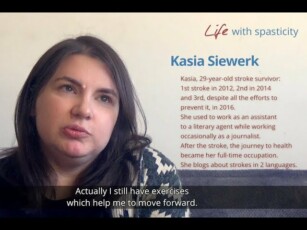
At-home exercises
There are a number of exercises that can be done at home to improve mobility or reduce acute spasticity. Regular exercises can improve the mobility of the area affected by the spasticity and ease patients` discomfort. This strengthens their perception and helps them to be more in tune with their own bodies. Always be sure to include sufficient rest breaks to allow the body to recover.
Movement patterns can be improved in particular by physiotherapy under the guidance of specialist therapists. Patients should talk to their GP about wether there are exercises that they can do at home for added benefit.
There are better and worse days. But nevertheless I welcome every single day, because each one of them might bring something good and unexpected.
Exercises example: Reducing spasticity in the hand
- First, clasp the affected hand with the healthy hand
- With the help of the healthy hand, place the affected hand onto a table or in your lap
- If possible, spread the fingers of the affected hand
- In this position, stretch the arms forward and move slowly up and down
Regular exercises can improve movement patterns. Always be sure to include sufficient rest breaks to allow the body to recover.
Orthoses
Orthoses can help to support some areas of the body. In this way, movements can be executed in a more controlled way and therefore more easily. Speak to your doctor about which orthosis is best for you.
An orthosis (an abbreviation formed from “or“thopaedic and pros“thesis“) is a medical aid that is industrially produced by orthopedic technicians and is available on prescription.
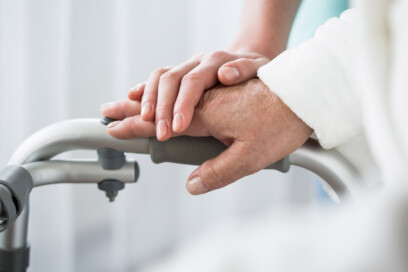
Aids to support everyday tasks
Cooking and eating
Spasticity sufferers can find it hard to feed themselves. Various aids in and around the kitchen mean that they can carry out simple tasks themselves again.
- Breadboard
The breadboard has a special bracket that secures the bread so that it cannot slip. This enables the bread to be cut with one hand. - Raised-edge plate
The raised-edge plate helps patients to push food onto a spoon or a fork using just one hand. It can easily be fixed to a plate. Alternatively a soup plate can be raised with a base attachment. - Single-hand decapper
The larger surface of the single-hand decapper provides more grip area and makes it easier to open a bottle, even with limited dexterity. - Cutting boards with vegetable holder
These special cutting boards can be fixed to the kitchen work surface with suction pads or clamps. Small metal tips make it easy to secure vegetables to the board so that they can be peeled or cut with one hand. - Single-hand chopping board
The single-hand chopping board has special brackets that are used to hook it to the edge of the table. It will therefore not slip when buttering bread for instance. - Adapted cutlery
The use of adapted cutlery that can, if desired, be bent back behind the handle, makes it easier to use the hand to eat.
Personal hygiene and dressing
Restricted mobility, misalignments or limited fine motor skills can make personal hygiene and dressing difficult. In this area too there are a number of different aids to help patients be more independent.
- Brushes and bath sponges
Attachments or long handles fixed to the sponge make it possible to wash hard-to-reach areas such as the legs or back with one hand. - Button hook
Button hooks make buttoning and unbuttoning as well as zipping and unzipping easier. It is therefore possible to do this with one hand or very limited dexterity. - Shoe horn
A long shoe horn helps those with limited mobility to put their shoes on.
Everyday skills
Limited mobility in spasticity patients can make it hard to pick up objects from the floor or unlock doors. Various aids can make gripping easier.
- Gripper
There are various types of gripper. They make it possible to pick up objects from the floor or table. - Key holders
A cover that can be pulled over the key makes it easier to grip the key and turn it in the lock.
Communication
Limited motor skills can make it difficult to use a telephone or computer and restrict everyday communication. There is a variety of different aids to help people use these appliances again and so increase their levels of social interaction.
- Large-button telephone
Large buttons make it easier to use the telephone. - Mouse replacement devices
Trackball mouses for example can make it easier to use the computer and replace the standard mouse. They enable the computer to be used with just one finger and so avoid unintentional keystrokes.
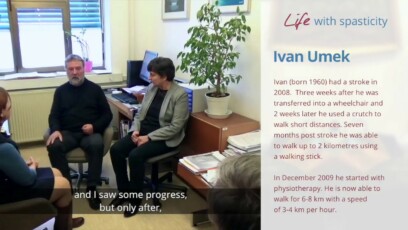
20 – How was the first time that he was able to walk by himself?
We would like to recommend you the newest actors in our video campaign. The twentieth episode introduces the couple Tatjana and Ivan Umek. In the first video Tatjana talks about Ivan and his recovery of mobility.
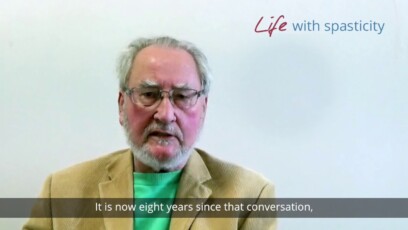
27 – Can you tell us about one of the projects you have worked on?
Today, the guest of our twenty-seventh video is David Britt. The video is meant to show that a stroke can affect anyone, regardless of their education / origin.
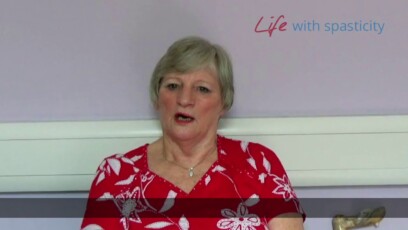
17 – What drives you every day?
The seventeenth video of our video campaign represents Rita Upon – She speaks emotionally about her impulse to go on every day. She also shows her passion: Never give up!
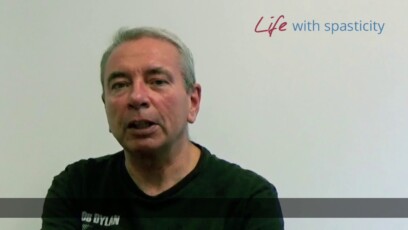
8 – How did you come to terms with the new limitations?
In the eighth episode of our video campaign Tom Flaherty talks about his daily routine and how the stroke affected it and his hobbies as well as his preferences.

3 – How did your life change after you had a stroke?
In the third episode of our video campaign David Britt talks about how the stroke changed his life and how he managed the new situation.

47 – What else keeps you motivated?
In the 47th video of the video campaign Ivan Umek talks about that his family being his motivation to go on and that everyone can have a bad day, but you have to move on. Furthermore, he reports that sport helped him with the coordination of movements.

